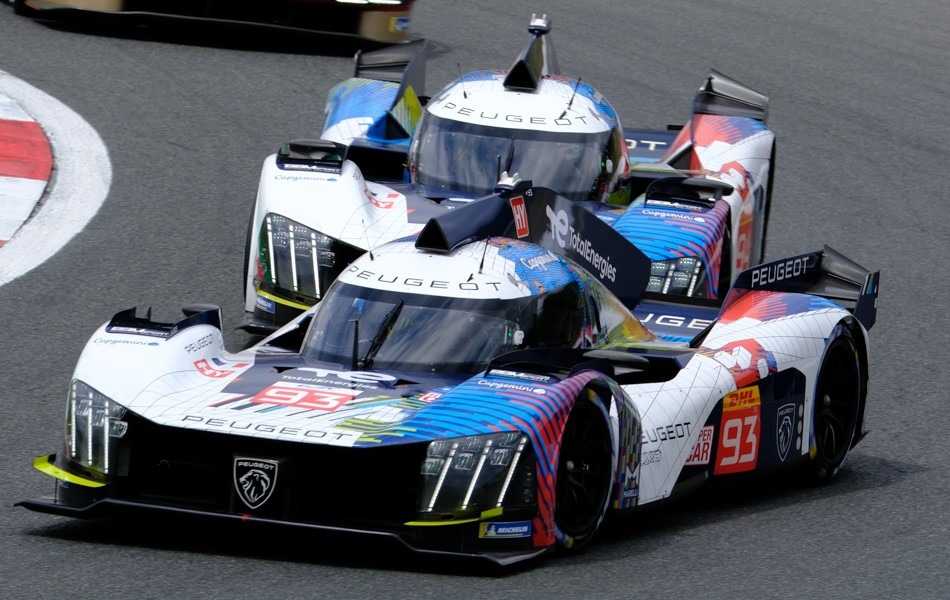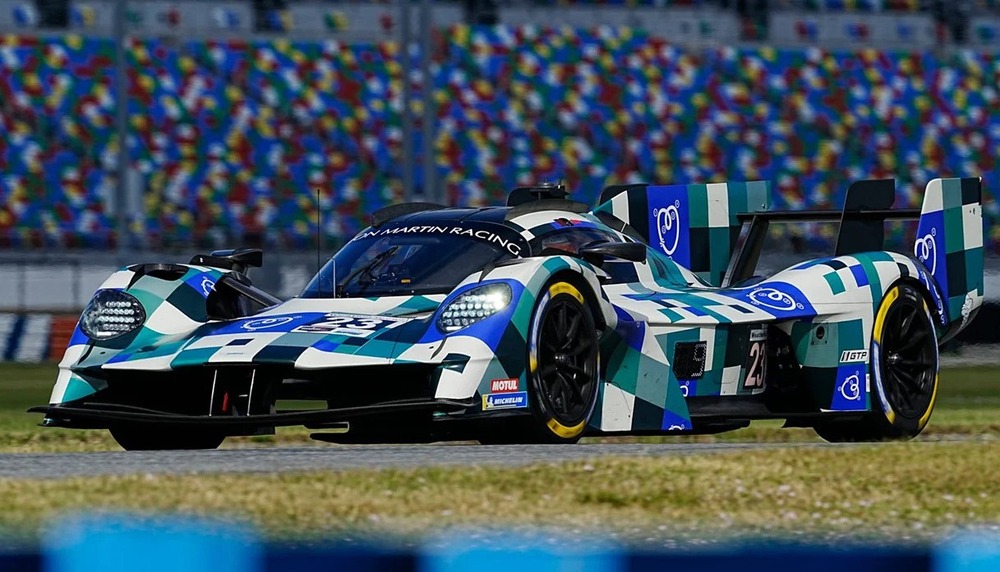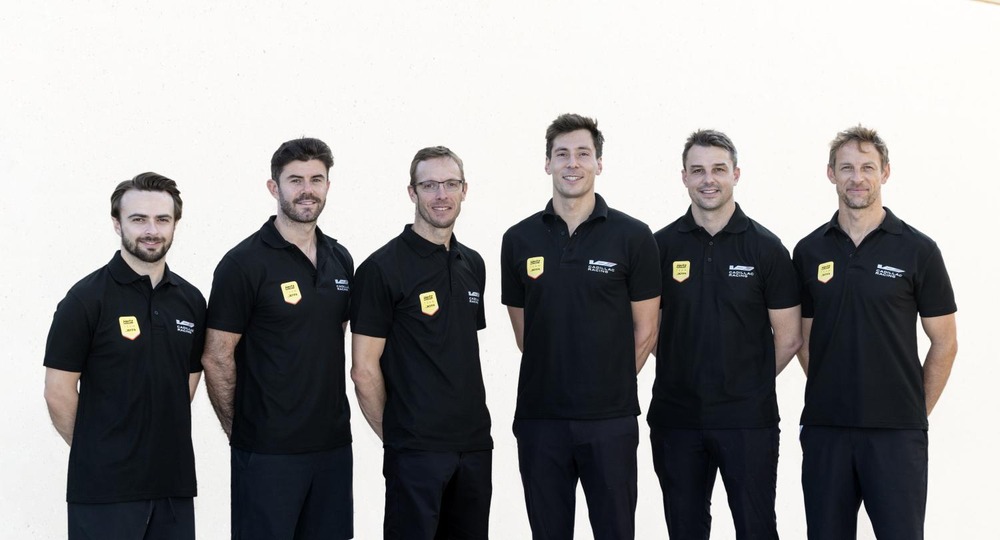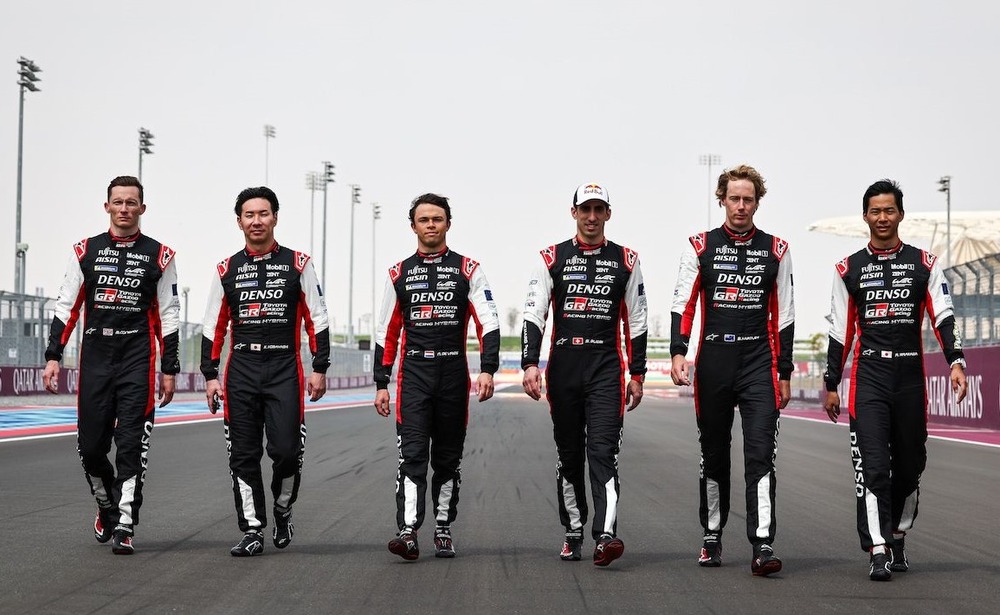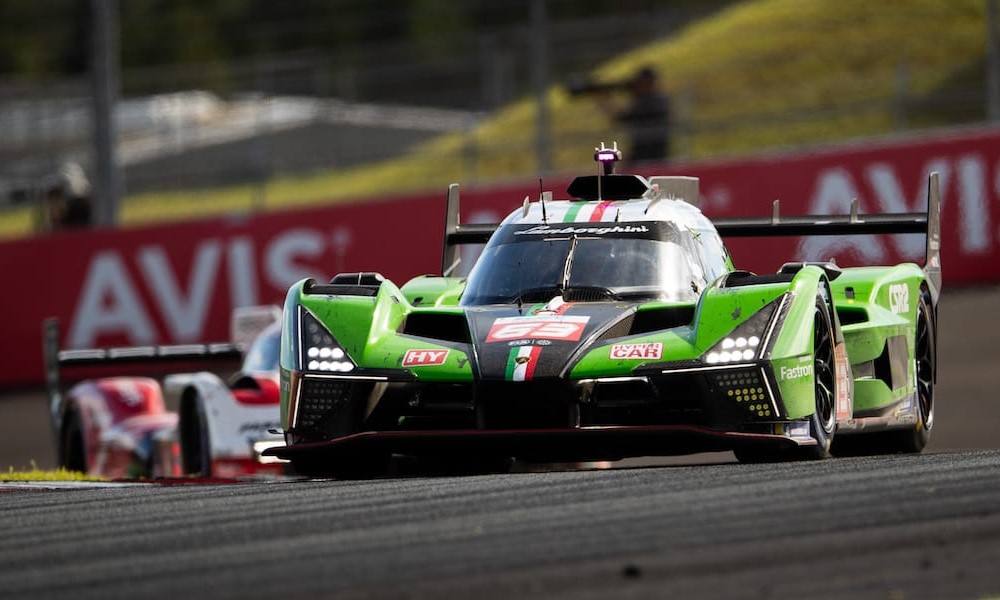Peugeot is planning to significantly upgrade its cutting-edge 9X8 Le Mans Hypercar for the 2024 WEC, that includes adding a rear wing among many other changes.
The head of Peugeot Sport Jean-Marc Finot has disclosed that the team is working on a “big evolution” of the 9X8 Le Mans Hypercar, which made its World Endurance Championship debut last summer.
Finot confirmed that a change away from the same width all-around tyres for which the 9X8 hybrid was designed will be part of the makeover of a contender that has so far finished no higher than third in the Hypercar category in the WEC.
Peugeot will switch to the smaller front tyres which will be 29 cm and wider rear tyres 34 cm in place of the 31 cm Michelins on both the front and rear axles. This setting is similarly adopted by the Toyota and Ferrari LMHs as well as all LMDh cars.
Finot declined to clarify if the updated 9X8, which will take advantage of the ‘evo joker’ regulations that permit five performance upgrades throughout the course of operation of an LMH or LMDh, will have a typical rear wing.
However, according to reports, testing of a revised 9X8 with a rear wing will commence as soon as Peugeot Sport begins its winter development program following this weekend’s 2023 WEC final round in Bahrain.
“We have made the decision to design the car again. We will come with a strong evolution for next year to enjoy the 29/34 tyres,” said Finot in Bahrain. “At Peugeot Sport we are fighters, so we made the decision to make a big evolution of the car because we want to be back with the front-runners.”
He also clarified that in order to take advantage of the switch to wider rear tyres, the balance of weight of the car as well as the aerodynamic centre pressure will be shifted backward.
“We have to increase the downforce on the rear and decrease the downforce on the front,” Finot explained.
“There are many ways to do that, so we will keep a surprise.”
Finot declined to comment on whether the updated 9X8 would be fully ready for the 2024 WEC’s opening round, which will take place in Qatar at the beginning of March.
“The schedule is very tight and we will do our best,” he added. “The schedule is not totally frozen; we have to negotiate this schedule with the FIA and the Automobile Club de l’Ouest.”
According to his remarks, Peugeot might begin its 2024 campaign with the current 9X8 model before launching the updated car in time for June’s 24 Hours of Le Mans.
Finot asserted that after a year, they noticed that the Balance of Performance has failed to meet their objectives and therefore Peugeot was compelled to carry out the significant upgrades. He emphasized that the original LMH requirements had specified a front-axle deployment speed of 120 km/h for the 9X8.
As of the most recent BoP, the limit is 135 km/h for the 9X8, although even this drop from the 150 km/h at which electric propulsion via the front axle was previously permitted hasn’t been able to get over the car’s traction limits.
Finot clarified that an amendment to the rules that permitted a manufacturer operating an LMH hybrid to select the 29/34 tyre option, compromised the initial concept of the 9X8.
This came after the regulations were modified as part of the convergence process to match the LMH and LMDh machinery’s performance. This included lowering the minimum weight requirement for four-wheel-drive LMHs from 1080 kg to 1040 kg.
Toyota claimed that this undermined their design since it prevented them from optimizing the GR010 HYBRID’s weight distribution for the 31/31 tyre option at the lowest possible weight. As a result, the GR010 was revised in order to use the 29/34 tires between the 2021 and 2022 seasons,
Finot maintained that since the 9X8 design was already finalized and the car had already been developed when the action was taken in the fall of 2021, Peugeot was unable to follow it.
The 29/34 option was made mandatory for all new LMHs in 2023 due to the amendment.

